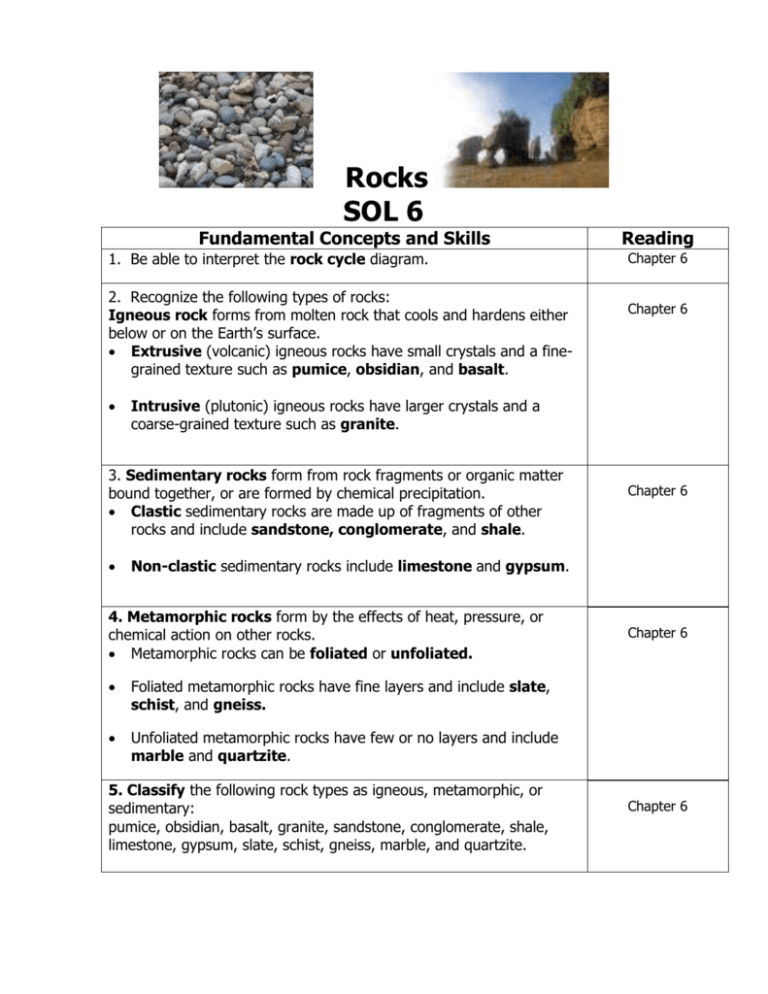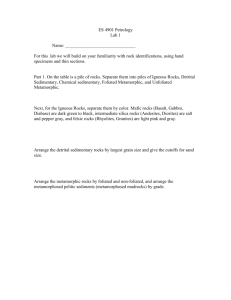UNIT 4: Rocks
advertisement

Rocks SOL 6 Fundamental Concepts and Skills 1. Be able to interpret the rock cycle diagram. 2. Recognize the following types of rocks: Igneous rock forms from molten rock that cools and hardens either below or on the Earth’s surface. Extrusive (volcanic) igneous rocks have small crystals and a finegrained texture such as pumice, obsidian, and basalt. Chapter 6 Chapter 6 Intrusive (plutonic) igneous rocks have larger crystals and a coarse-grained texture such as granite. 3. Sedimentary rocks form from rock fragments or organic matter bound together, or are formed by chemical precipitation. Clastic sedimentary rocks are made up of fragments of other rocks and include sandstone, conglomerate, and shale. Reading Chapter 6 Non-clastic sedimentary rocks include limestone and gypsum. 4. Metamorphic rocks form by the effects of heat, pressure, or chemical action on other rocks. Metamorphic rocks can be foliated or unfoliated. Foliated metamorphic rocks have fine layers and include slate, schist, and gneiss. Unfoliated metamorphic rocks have few or no layers and include marble and quartzite. 5. Classify the following rock types as igneous, metamorphic, or sedimentary: pumice, obsidian, basalt, granite, sandstone, conglomerate, shale, limestone, gypsum, slate, schist, gneiss, marble, and quartzite. Chapter 6 Chapter 6







